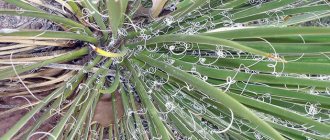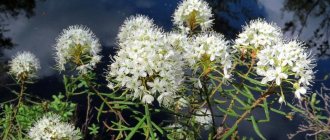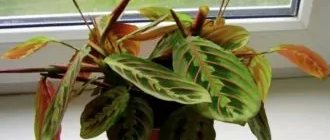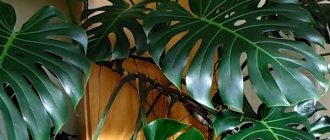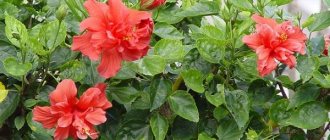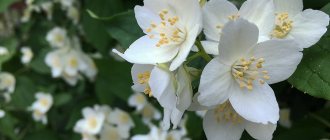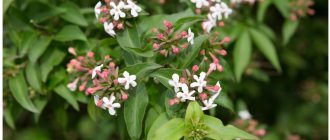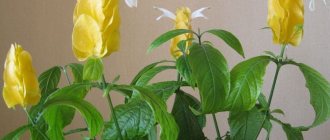On the damp banks of rivers in the tropics of Brazil and South America, an unusually beautiful tree grows - the jacaranda. This is a plant from the Bignoniaceae family. They say it brings good luck. Often, in the house where a child was born, local residents plant a jacaranda, the so-called violet tree.
In Australia, the jacaranda flowering period is from October to November. This time coincides with the end of the school year and the beginning of exams for schoolchildren and students. In this regard, residents call it examination. A blooming panicle falling on the head will bring good luck to those going to the exam.
Rosewood is an evergreen tree of medium or large size, valued not only for its decorative effect, but also for its wood. There are about fifty species of this plant.
Photo gallery
Only mimosolia jacaranda can be grown indoors. It is better to keep it in rooms with a high ceiling, as it reaches a height of two meters. Jacaranda trees must be pruned before growing. More suitable for greenhouses and “winter gardens” than for a standard room in a Russian apartment.
It is non-toxic, does not affect air purification, and does not emit any harmful substances. Does not belong to the class of poisonous, not harmful to children, adults and pets.
Outwardly, it is often compared to sakura, jasmine and lilac. But in indoor conditions you will hardly find any flowering, so it resembles an ordinary plant with a beautiful stem and graceful leaves.
How does it bloom?
In wild conditions, jacaranda grows up to 15 meters, it has a lush crown and wide feathery leaves that have elongated bright green plates. The tree has large inflorescences with five dozen purple or bluish flowers with jagged calyxes and curved bell-shaped corollas, which are slightly lowered and bent.
Mimofolia jacaranda has violet-bluish inflorescences with small calyxes. The plant with flowers can be seen more often in October and early November. In indoor conditions, it blooms twice a year: in spring and autumn. Varieties of this species, Magdalena and Delta, are also used for cultivation.
Description of the plant
Jacaránda is a tree plant from the Bigoniaceae family, growing in South America (Brazil, Mexico, Bolivia), Africa (Zimbabwe) and Australia in tropical and subtropical lowland and mountainous regions. The name "jacaranda" is translated from Portuguese as "having hard wood." Locals call these plants Black Pui, fern tree, for the shape of the leaves, rosewood, violet tree or rosewood tree.
The trees can reach 20-30 meters in height, but there are also shrubs among them, no higher than 2 meters. They are a semi-deciduous species; if the ambient temperature drops to 0°C, the leaves may fall off. Young plants die at -3°C, and adults rarely withstand temperatures below -7°C.
Their leaves are fern-like, feathery, bright green. The bark can have different shades: from red to chocolate and even purple. The shape of the flower resembles a bell, about 5 cm long. They are collected in brushes containing 30-50 flowers. Petals can have a variety of shades from white to blue, indigo, and violet. The tree blooms very profusely in October-November; under the weight of the flowers, the branches bend down to the ground. The sticky sweet nectar and scent that lingers in the air attract insects that pollinate the flowers. The duration of the flowering period is 1.5-2 weeks. After wilting, seed pods form in place of the showy flowers. Ripe capsules burst and the winged seeds scatter over long distances.
Having a very decorative appearance, jacaranda is used for landscaping streets, parks, and public gardens in cities in Africa, Australia, and South America. But it’s not just the appearance of trees that is valued. They have very hard, durable wood; valuable qualities are in demand in the manufacture of furniture, musical instruments, various souvenirs, interior items, and so on. During processing, the core of the tree acquires a beautiful color - red-brown with a purple tint.
Signs and superstitions
It is believed that jacaranda has a strong magical effect, so keeping it at home is extremely beneficial for the family. This is a tree that gives beauty and brings good luck. It has a number of properties that cleanse the aura and fill the space with positive energy.
It brings prosperity and prosperity. The violet tree purifies negative thoughts and instills harmony and tranquility in the soul. However, for some people it causes apathy and drowsiness.
According to Feng Shui, it is better to place jacaranda in wide spaces near windows. It is not advisable to place it next to the bed and resting place, in the kitchen or in the office.
Signs associated with the flowering of the violet tree are also common. This process promises well-being, brings prosperity to the house and may indicate an imminent addition to the family.
When purchasing a plant, pay attention to your interior. Jacaranda cannot be in a cramped and narrow space; it needs space. Don’t forget to move it into the shade in hot weather, otherwise the leaves may soon turn yellow.
When purchasing, pay attention to the leaves - if they are yellowish at the edges, and the leaves themselves are slightly curved, then this plant may soon wither.
Choose a violet tree with bright green leaves that have a glossy sheen.
Varietal diversity
For indoor decoration, two types of plants are used - the mimosifolia jacaranda tree and the fluffy jacaranda tree (Jacaranda tomentosa) . The second type is just beginning to gain popularity, so it can be found quite rarely in stores.
Downy jacaranda (Jacaranda tomentosa)
The type of mimosolous beauty is represented by a large number of varieties, among which the most popular are:
- Jacaranda delta. Decorative, deciduous tree, reaching two meters in height. The foliage is lush and light green.
Jacaranda mimofolia Delta
Jacaranda delta is the most popular for landscaping at home, but, unfortunately, it blooms extremely rarely. - Magdalena . Characterized by fast, intense growth. An adult specimen can reach three meters in height. The foliage is light green and fluffy. It blooms extremely rarely in pots; it blooms only in open ground. Used as landscaping for spacious rooms.
- Bansai Blue . Reaches only 75 centimeters in height, specially bred to form a small tree in the bonsai style.
Is Jacaranda suitable for bonsai?
The plant is used for cultivation using Japanese bonsai technology. This allows you to control the growth of the crown and leaves, as well as create your own miniature garden. There is even a separate variety of jacaranda, “Bonsai Blue,” which does not reach a length of more than 75 centimeters. For cultivation, the following conditions must be met:
- in the first year you cannot prune it;
- in the second year, cut to 10 cm and wait for side shoots to appear;
- then pinch the jacaranda, trimming the leaves and crown;
- to form the crown, you can use soft wire, which must be removed after 3 months;
- It is better to cut off all large leaves;
- Jacaranda will branch worse when standing in the shade.
Home care
In summer it is unpretentious and easily adapts to the absence of sun, and in the heat it practically does not dry out. It is recommended to keep it at a temperature of - 13 °C. In winter, it needs a cool room, with a temperature of about 7 °C. Sudden changes in temperature are not allowed, as the plant is in “hibernation”.
High humidity of at least 60% is desirable; daily spraying with soft water at room temperature is required. In winter, you need to water less often, up to once every 3-4 weeks.
The violet tree loves light, so it can be placed in a window all day. Young plants can exist in light partial shade. In winter, additional light sources are needed.
Accommodation
Jacaranda prefers bright light; it tolerates direct sunlight for about 3 hours. The plant feels comfortable near western and eastern windows. The pot must be rotated periodically, since one-sided lighting can deform the crown.
The temperature required for normal plant development in summer is +25 °C, in winter – +19 °C. In summer, jacaranda loves to “walk” in the air. In this case, the place where you place the flower should be protected from the wind.
Transfer
To prepare a jacaranda for transplanting you need:
- treat the leaves with a protective spray and trim them;
- prepare a new pot and soil;
- add fresh humus to the soil;
- treat the soil with phosphates.
A transplant may be needed:
- after the purchase;
- because the flower has grown and the pot is cramped;
- due to improper soil;
- due to flower diseases.
Replanting during flowering is undesirable, but is possible only if the plant has been attacked by pests and are beginning to approach the root system.
Possible problems
If there are violations in the care of home jacaranda, it becomes less resistant to pests and diseases. In this case, problems such as:
- Rot forms on the root system . Excessively abundant watering and poor drainage layer. Replant the diseased bush, while cutting out all the affected roots. For planting, a soil mixture is used, which is mixed with brick chips, vermiculite and perlite.
- Yellowing of foliage . The plant feels a lack of iron. Add this element to the substrate.
- Flying leaves in spring . Natural process.
- Pests . A scale insect, spider mite or whitefly may settle on the tree. To get rid of them, use suitable insecticidal agents.
Growing and Reproduction
Jacaranda is grown in 2 ways:
- seeds;
- cuttings.
What needs to be done for good seed germination?
- Growing from seed requires good soil.
- It is necessary to choose suitable soil with proper drainage.
- Use small ceramic pots.
- The temperature during germination should be up to 30 °C.
- You need to stretch small cotton wicks through the drainage and lower them into a container of water.
- The top of the drainage should be covered with soil and a seed should be placed in the center.
- The seed must be sprinkled with a small amount of soil.
- The pot should be placed in a transparent plastic container with a lid or grown in a greenhouse.
- It needs to be exposed to the light.
It is necessary to spray as the soil dries using a spray bottle. Shoots appear after 2-4 weeks.
Propagation by cuttings
- Cut the stalk.
- Dry it for several days in a pantry or other dry, dark place.
- Place in a heteroauxin solution for a day to accelerate root formation.
- Add moist substrate to the planting site.
- Plant the cuttings at an angle of 45 °C, adding peat and fine sand to the mixture.
- Cover with film and keep at 25°C.
Rhododendron
Rhododendrons belong to the Ericaceae family. These small trees and shrubs are found throughout the world, but are especially popular in China and Japan. Rhododendron flowers are collected in multi-flowered inflorescences of various colors: pink, purple, red, orange, yellow, white. They bloom in May, and at this time it is impossible to take your eyes off the rhododendron.
In the middle zone, the most winter-hardy and unpretentious rhododendrons are grown: Katevbinsky, Daurian, Vazeya, golden, Caucasian, pointed, Japanese. Only their heat-loving varieties need shelter, and species plants tolerate even harsh winters well.
Fertilizer and feeding
The best “nutrients” are fertilizers based on phosphorus and superphosphate. It is also recommended to use lime, but it should not be combined with acidified soil and alkaline fertilizers. It is better to use fertilizers in dry form, but you can add a little con class=”aligncenter” width=”1200″ height=”1200″[/img]
Organic
Manure, bird droppings, peat, silt, sawdust and tree bark, green manure, composts.
Mineral
They are considered excellent assistants when processing plants, strengthen them and provoke rapid growth.
- Potassium.
- Phosphorus.
- Complex mineral fertilizers.
You can buy mixtures of peat and sand, compost, as well as various mineral fertilizers. Among them: “Superphosphate”, “Ammophos”, “Urea” and others.
Kornevin is a cream-colored powder, a small amount is used in dry form, suitable for dipping the end of the cutting when transplanting for better rooting or rapid development of roots.
Heteroauxin is the main phytohormone of plants, promoting active metabolism and preventing rapid leaf fall.
You can prepare fertilizers at home by mixing natural ingredients with mineral ones.
It is necessary to feed during growth once every 2 weeks. It is very useful for jacaranda to use organic fertilizers, alternating them with mineral ones even during the dormant period. Watering
Water the jacaranda sparingly, as it does not like excessive moisture. It needs abundant watering during the period of active growth - from spring to autumn. The water should be at room temperature and soft; do not water it with cold water, as the violet tree may “get sick.” In winter, you need to water less often, and in especially cold months, up to once every 3-4 weeks.
Diseases
Leaves curl and turn yellow
Possible reasons are dry air and soil, cold, drafts. It is recommended to inspect your jacaranda for pests. If insects are not found, you need to adjust the care and maintenance regime.
Leaf chlorosis
Develops due to high lime content in the soil, poor watering, deficiency of iron, magnesium, sulfur and zinc. Accompanied by yellowing of leaves and slow growth. They are transplanted into nutritious soil and fertilized with fertilizers with a high content of missing microelements.
Root rotting
Lack of drainage, dense soil, excessive watering. Check the condition of drainage and soil. If necessary, replant the plant, stop watering, then water moderately.


